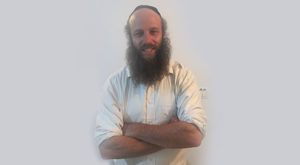Leaving the Darkness Behind
| December 30, 2015Years and years of childhood abuse or neglect harm the psyche in myriad ways. Traditional talk therapy is often unable to assuage the pain. One woman’s story of healing, and a look at effective methods of treating long-term trauma.

Years and years of childhood abuse or neglect harm the psyche in myriad ways. Traditional talk therapy is often unable to assuage the pain. One woman’s story of healing, and a look at effective methods of treating long-term trauma
One of my earliest memories is waking in the middle of the night to the sound of my mother’s mad laughter as she chased my father around the dining room table, his black shoe in her hand, poised to strike. His arms were held protectively over his head as he tried to escape. To me, it seemed like a wild, adult game. They took no notice of their eight-year-old daughter in the shadows. When they finally disappeared into their room, I went back to bed, frightened and disturbed. It took a long time to fall back asleep.
To outsiders, my mother — a schoolteacher — appeared competent, hardworking, the consummate balabusta. She always dressed us in the trendiest fashions. But we feared her. Control was crucial to my mother; our slightest misstep was dealt with with a strong punishing hand. My younger sisters would disappear whenever she raged — which was often. As the oldest, I tried to reason with her, to protect myself and my siblings. It never worked. Talking back to my mother was sinful.
“You azzes panim!” she would snarl. “How dare you talk to me this way?” Grabbing the nearest mixing spoon or shoe, she’d bring it down on my rear, arms, legs. “I’ll show you!” Whack! She’d be panting from the exertion. “Who’s the mother around here?”
My mother acknowledged I was bright, talented, and pretty — important assets to her. She could be adoring sometimes. I remember how she saved the poems I wrote in a special journal near her bed. She could be fun too, building big Tinkertoy structures on the floor with us and sewing creative Purim costumes.
Nevertheless, in her mind I was never a normal child, one with strengths and abilities, and also needs, fears, and wants. I was either devil — threatening her authority, an “impossible” child — or her princess.
At the same time, because I was empathetic, she confided in me. At only ten years old, I knew all about her marital unhappiness. And I used to worry. Due to my father’s heart condition, he was unemployed: Where would our money come from? Would my mother’s unceasing criticism and physical aggression make him leave? Would it make him sicker?
My heart hurt for my sad, angry mother and my timid, sick father. I was consumed with fixing the situation by either pretending to have no needs or exploding in indignation. As my mother’s frustrations escalated, so did the abuse. I (as opposed to my siblings) was routinely beaten, the classic “scapegoat” in the sick dynamic of abusive families.
Particularly painful was how everybody admired her for holding it together, especially when my father eventually left. Even Abba’s family pitied my mother who was left to support her children alone. When my father was diagnosed with bipolar disorder, she garnered even more sympathy. Whenever I attempted to tell relatives about our mistreatment, they scolded me for not appreciating my mother’s hard work for her children. There we were — hostages in our home, under constant attack, with no protection.
And the worst? The hopelessness my mother infused in me. She constantly insisted I was flighty, impractical — a dreamer. With my pitiful homemaking skills, who would marry me? She didn’t believe people could change and transmitted that destructive philosophy to me.
Much later I learned that a defining characteristic of individuals with borderline personality disorder is the way they externalize their faults, possessing little self-awareness. To my mother we were sick; she was the normal one. To this day she denies doing anything to hurt me, claiming I must have hallucinated her abuse.
At 18, I left home. Unfortunately, my psychological damage followed me. I began to date. Fearful that my “defects” would be discovered, whenever a young man seemed nice and enjoyed my company, I withdrew. The feeling of being liked was too uncomfortable. Finally I became engaged to someone simple and uncomplicated, or so I thought.
We moved to Israel to put distance between my mother and myself. Sadly, my husband brought many dysfunctional behaviors with him that only increased over time. Emotionally aloof, angry, and critical, he was obsessive and controlling. Our home was pervaded with hostility and tension instead of the joy and peace I craved. Later I learned my mother had “warned” my husband early on that I could be “difficult” and needed a “firm hand.”
After my fifth child was stillborn, I went into therapy and was diagnosed with clinical depression. I wept frequently, barely functioning. But the diagnosis was actually a relief. Finally, I began gaining awareness of the trauma I had suffered as a child and continued to suffer. I also learned that unresolved trauma often gets unconsciously reenacted with one’s children.
I began searching for help for my childhood trauma. I read Miriam Adahan’s EMETT book and joined an EMETT group. I remember the liberating feeling of being encouraged to express true feelings — even negative ones. I also devoured Rabbi Abraham J. Twerski’s books. Reading had always been my escape from the chaos at home; now it was a source of information and empowerment.
After 16 torturous years, I filed for divorce. I was filled with fear for the future. My mother’s incessant criticisms reverberated in my head: “There you go again, flighty and impractical.” Vulnerable, I imbibed her beliefs. I was mentally and physically depleted.
I began eating compulsively and my weight ballooned. (Subsequently, I discovered the connection between trauma and addictions; addictive behavior is often an attempt to numb pain of unresolved trauma.) Counseling and EMETT were helpful but not enough. Trauma, according to those who study its effects, lodges not only in the mind but in the body and thus can only fully heal through whole-body treatment. Through talk therapy, I now understood the source of my “fight, flight, freeze” responses, for example, but I was still unable to slow their intensity.
I joined Overeaters Anonymous. From there I learned about ACOA, a 12-step program for adult children of alcoholics and/or dysfunctional families. These programs have restored my sanity and given me hope. I continue to learn about healing trauma. With my therapist’s encouragement, I had several sessions of eye movement desensitization and reprocessing therapy (EMDR). Using eye-movement exercises, EMDR helps the individual recall traumatic incidents without the accompanying fearful body sensations. I still have flashbacks, especially in the presence of critical or violent people. However, because of EMDR, these feelings are much less intense.
Similar to how long periods of captivity affect prisoners of war, the years I spent trapped in my home, in constant fear of my mother, left me with post-traumatic stress disorder (PTSD). When trauma is prolonged, as in my case, it is referred to as complex post-traumatic stress disorder (C-PTSD). Among other symptoms, C-PTSD is characterized by problems with relationship boundaries, dissociation (which could present as depersonalization, amnesia, or impaired memory for specific events), difficulty identifying and expressing emotion, impulse control problems, difficulty regulating attention, and distorted self-perception.
At this point, I’ve found a number of psychological strategies that have facilitated my healing. A simple technique that helps me alleviate daily stresses is Emotional Freedom Technique (EFT), which involves focusing on a specific issue while physically tapping defined points on the body. Psychodrama has been of ongoing benefit. In a safe, supportive group setting, members replay a traumatic event and gain relief and release of the trauma. Dialectical behavior therapy (DBT), a type of cognitive-behavioral psychotherapy, helped me access my “wise mind” to heal the “splitting” that occurs in people with borderline personality disorder.
Because of many years of living with a parent with borderline personality disorder, I’d developed many symptoms. Through DBT, I learned that a healthy mind has the ability to hold two seemingly paradoxical thoughts. I could view myself as a basically good person possessing both strength and weakness.
My rabbi, who specializes in guiding trauma victims, has been most supportive. He’s studied the connections between trauma and addictions. After thorough investigation into the physical effects of trauma on the body and mind, he has come to view victims of trauma as cholim (sick people) and bases his halachic responses accordingly.
Today, I focus one day at a time to heal the broken places within. I work on affirming the positive in my life and in myself. I have held a job for the last ten years (something I struggled with for years), I exercise, and try to eat in ways that nourish my body. I work on creating new and loving affirmations to replace the critical, negative, doom-filled recordings from my childhood.
I practice forgiveness, compassion, and love. With the help of the ACOA 12-steps, I work on forgiving those who have hurt me. I know that when I feel critical of people, I need to stop and check where that’s coming from. When fear overtakes me, I remind myself that I am safe; nobody is hurting me now and I have the power to walk away.
I try to surround myself with loving, supportive people. Although, of course, it’s not always possible. I’m learning to give the benefit of the doubt. In ACOA we say, “Hurt people hurt people.” My mother is a wounded child herself and treated her children the only way she knew.
I’m blessed to be learning better ways to live and to love. Trauma has given me resilience and a sense of the important things in life. I feel pain intensely but feel joy intensely as well.
I know I cannot be totally free of fear. I grow stronger when I face my fears with courage, faith, and the support of loving friends, one day at a time. There will always be triggers that bring back the old feelings of helplessness, how I felt as a child unable to stop the dysfunction around me. I’m encouraged by the growing awareness of abuse in our society and education to prevent it from happening, as well as the proliferation of therapies to help those who suffer.
Our Sages knew well how precious and vulnerable a child is: “Al tig’u bimshichai — Do not harm My anointed.” These, our Sages declare, are the children.
On a train recently, I witnessed a mother berating her child. I felt the familiar choking sensation; my heart began to pound. I recognized the feelings. I reassured my frightened inner child that she was safe, and then prayed for the child on the train and for all children who still suffer.
There are a number of therapies used to effectively treat C-PTSD and other forms of trauma. Below are descriptions of some of the more popular ones.
Psychodrama
In this form of psychotherapy, clients use spontaneous dramatization, role playing, and dramatic self-presentation to investigate issues and relationships and gain insight. One common technique is “the empty chair.” The client will figuratively pull out the part of her psyche that is problematic — for instance, her anxiety — and place it in the empty chair. Acting as her anxiety, the client will explain why it is such a necessary component to her (the client’s) life. It might say, “I’m here to help you. Without me, you’d never accomplish anything.” The client will then move back to her regular chair and respond, saying something like, “I appreciate that you’re trying to motivate me but I end up feeling paralyzed. I can’t have you play this role anymore.”
“The point is, you can’t banish the anxiety — you have to work with it,” explains Baltimore trauma specialist Gail Feinstein, LCSW-C. The client continues the dialogue with her anxiety until she feels finished. The dialogue may take only one session, but it can take weeks to work on integrating the necessary changes the next time her anxiety surfaces. “The magic of it,” explains Gail, “is the separation, which imparts clarity and perspective. Before, it was simply an overwhelming feeling; now we are actually looking at it, understanding it, and ultimately putting it in its place.”
Sometimes the empty chair will be occupied by the abuser. The client will leave the chair empty in that case and speak to the perpetrator from her chair. In this safe environment, the client has the freedom to speak without fear of reprisal. It’s healing because she feels she’s actually confronting the perpetrator and at the same time processing her intense emotions of rage and betrayal. This method can also be used to process unfinished business toward a parent who didn’t protect the client from the abuse.
Sandplay
Sandplay or sand tray therapy establishes a safe space where the complexities of the inner world are explored and integrated in the psyche for emotional healing. Clients place miniature figurines in a tabletop sandbox to express relationships, feelings, goals, and concerns. This creates a visual representation of the psyche’s contents and reveals unconscious concerns that are otherwise difficult to access. As feelings contained in the unconscious emerge visually and symbolically, they’re integrated into a person’s sense of self and can be activated to elicit behavioral change.
“Usually,” Gail shares, “I’ll give the client a directive. If we’re talking about a certain topic, I’ll suggest she create a sand scene depicting it.” The client shapes the sand and places objects, like human figures, animals, inanimate objects, or plants, in the sand.
“This is the client’s ‘sacred space,’ ” continues Gail. “I’m there as a ‘witness’ and guide. For example, a newly married young woman was feeling pulled by the demands of her husband and parents. She chose living objects to represent her husband, mother, and father, and an inanimate object for herself. She placed them in a square. After she finished, I observed that she’d placed herself equidistant from her husband and parents. Immediately she got it. ‘Oh yeah, I haven’t separated from my parents even though I’m married.’
“Noting that she alone was represented by an inanimate object helped her understand the depression she was experiencing. What could have taken weeks to talk about came together in one powerful, visual sand scene.”
Sandplay helps people access what they instinctively know is truth. Part of why that happens is because there’s containment in the sandbox. Thoughts can get overwhelming, but the sand tray is concrete. This is especially helpful with complex trauma, when words are often insufficient.
“I also always bring the body into sand tray,” continues Gail. “I ask, what do you notice in your body when you look at the sand tray? The body never lies; it’s an amazing source of information for what people are experiencing.” Even if the client answers she feels nothing, Gail will probe further: “How does ‘nothing’ feel? What does ‘nothing’ look like? Describe another time you felt ‘nothing’ ” This helps the client go deeper in her understanding of herself.
EMDR
EMDR (Eye movement desensitization and reprocessing) is an empirically supported treatment for trauma. In the memory processing phase of EMDR, the client is guided to bring into conscious awareness the sensory aspects, thoughts, and accompanying emotions and bodily sensations of the distressing memory. The therapist then guides the client to track the moving fingers of the therapist with his eyes for around 30 seconds.
During the eye movements, the therapist does not talk or offer suggestions. The client does not try to actively change any aspect of the memory, and is asked to just notice the experience, to observe any emotions, bodily sensations, and thoughts that arise.
At the end of each set of eye movements, the client has the chance to report his experience. Often the emotional or bodily sensations reduce in intensity. If other associations are observed, they can be shared with the therapist. Further sets of eye movements follow, until the memory is recalled as a distant event, with minimal distress. The client is then asked to associate a more useful self-referential belief to the now more distant trauma memory, and further sets of eye movements follow. The EMDR process is complete when the new perspective feels true even when the memory is recalled.
Scientists don’t know exactly why these eye movements are helpful, but this process produces a distinctive pattern of electrical activity in the brain, which causes the stored trauma memory to actually change.
When upsetting events occur, “our minds figure out a way to realize what’s happened and integrate the experience into our psyches,” explains Joel Pomerantz, a certified school psychologist who practices EMDR and cognitive behavioral therapy. “For example, if a person experiences a loss, usually after a while, they’ll report the event no longer bothers them. ‘That’s old stuff, happened a long time ago’ are examples of ways the brain might adaptively resolve the experience.
“Sometimes, however, an event overwhelms the ordinary mechanisms of information processing. It’s simply too much to ‘realize’ fully, due to the sheer raw emotion associated with it or the devastating implications (such as ‘Mommy doesn’t love me’). In these situations the brain will continue to store the memory in an unprocessed state, isolated from adaptive information that would ordinarily promote a sense of present wellbeing and safety.”
On an unconscious level, the memory is “alive” and actively contained and avoided by the brain to prevent unpleasant intrusions. This strategy can work well, as long as nothing triggers the avoided memory, which may cause flashbacks, emotional, or behavioral reactions out of proportion to the present situation. Each time that happens, the person becomes more afraid and more avoidant. The goal of EMDR is to assist the brain in integrating trauma memories.
NET
Emotions are known to be a causative agent in many physical illnesses. NET (Neuro Emotional Technique) is a mind-body technique that finds and removes the neurological imbalances created by unresolved stress. It doesn’t cure or heal the patient, but rather, NET removes whatever is blocking the body’s natural vitality, allowing it to repair itself naturally.
As a chiropractor for 20 years, Dr. Chaya Bina Samuels, DC, is trained to ease body and muscle pain. She’s also trained in muscle testing for areas of weakness in the body, and certified in NET.
“In general, emotions are healthy,” Dr. Samuels explains. “They’re only problematic when they get stuck in the body and start to cause that chronic neck pain, back pain, and other pain.” Through NET, the practitioner will pinpoint the source of the emotional pain that has taken the shape of physical pain and work to heal the patient. “However, in the case of C-PTSD,” cautions Dr. Samuels, “the best work I do is with patients who are concurrently in therapy.”
Dance Movement Therapy
Neurobiological research supports the fact that, along with nonverbal, sensory experiences such as images, body sensations, and emotions, emotional memories and traumatic experiences are stored in the limbic system and right hemisphere of the brain. Nonverbal therapies, therefore, are effective ways to access and release these “unconscious” feelings and experiences and bring them into awareness, where they can be healed.
“You can talk until the cows come home,” says dance movement therapist, Bella Grossberg, BC-DMT. “But trauma stuck in the body must heal through the body.” Dance movement therapy (DMT) uses movement as the primary means of communication. In this modality, the body is actually given a voice. Memories too difficult to express verbally can be shared through movement, and previously dissociated feelings can be identified as they arise in the body.
“DMT can be helpful for trauma survivors but no example is clear-cut, as the process is a slow, gradual, and trust-building exercise,” explains Bella. “Clients often start with a negative and damaged body image as they often experience shame and dissociation from their bodies, which hold the abuse. DMT helps clients become aware of their bodies and enliven their senses; to become present to their selves and environment and to begin to appreciate and acknowledge parts of their bodies that do function well, like feet that help their bodies stand and walk. Over time,” Bella continues, “acceptance of their bodies increases and they learn to trust their bodies again.”
There are often visible cues that demonstrate changes, like the client wearing more colorful clothes, enjoying attention and compliments from others, and having a more confident walk and presence.
(Originally featured in Family First, Issue 473)
Oops! We could not locate your form.












